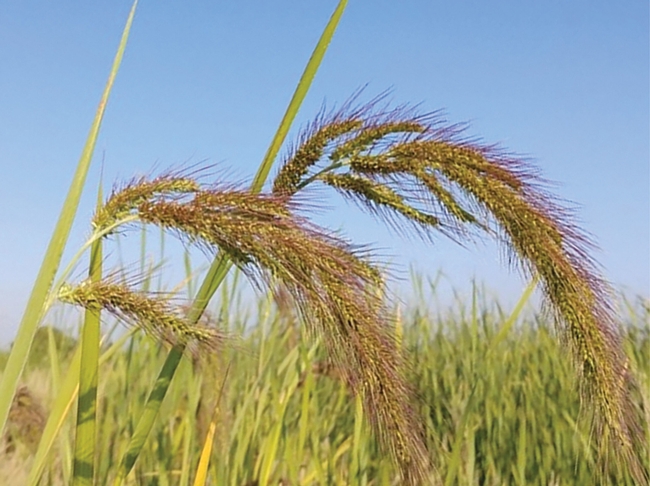Coming out of 2022, where roughly half of all California rice fields were left fallowed last year, and others may have been fallowed for two seasons, many of us have questions about what weed management will look like in 2023. While we do not have data on what a 1- or 2-year fallow does to all of our major weed species, we have some preliminary and anecdotal data that might lend some insight.
For small-seeded weeds such as smallflower umbrella sedge, redstem, and ricefield bulrush, the fallow period will likely have no effect. A good anecdotal example is from a field in Davis that was planted for a long time in rice, followed by nothing being planted for over 10 years. Once the field went back into rice, ricefield bulrush was widely distributed throughout the field, and readily emerged. Ricefield bulrush seeds have a thick seed coat, making it easy for them to survive in the soil for a long period of time, and they have a high level of dormancy, increasing their persistence.

For larger seeded weeds including watergrass, a fallow may have an impact, but that impact will likely only be on those weed seeds near the surface of the soil, where they may decompose, and are at increased chance of predation. In a preliminary study conducted last year, we found that in fields where tillage occurred in the spring post-fallow, watergrass emerged, as seeds were brought up from deeper in the soil profile, where they would have remained dormant if tillage did not occur. In fields that were no-till in the spring, in at least one instance, the watergrass did not emerge at the same rate as in the tilled field. Similar results were seen with arrowhead, a perennial aquatic species. The effect of the tillage was to bring up the seeds from deeper in the soil profile, increasing emergence in the tilled area of the field.
At this time, no anecdotal or preliminary data exists for sprangletop. However, due to the small seed size and high dormancy period, it is likely that sprangletop would not be greatly affected by a fallow period and would emerge as normal.
Preliminary data from grower fields that were monitored over three years shows a reduction in weedy rice seed viability in the top 12 inches of soil. However, these fields have not been planted back into rice, so it is unknown whether the reduction of viable seed in the soil translated to reduced emergence.
To summarize, it is unlikely the 1- to 2-year fallows will cause a great reduction in weed emergence, especially for small-seeded species. For larger-seeded species, there may be an impact, which can be increased by use of zero- or reduced tillage in the spring following a fallow period.
Original source: RiceFarming, March 15, 2023
Author - County Director, Sutter and Yuba Counties and CE Rice and Wild Rice Advisor